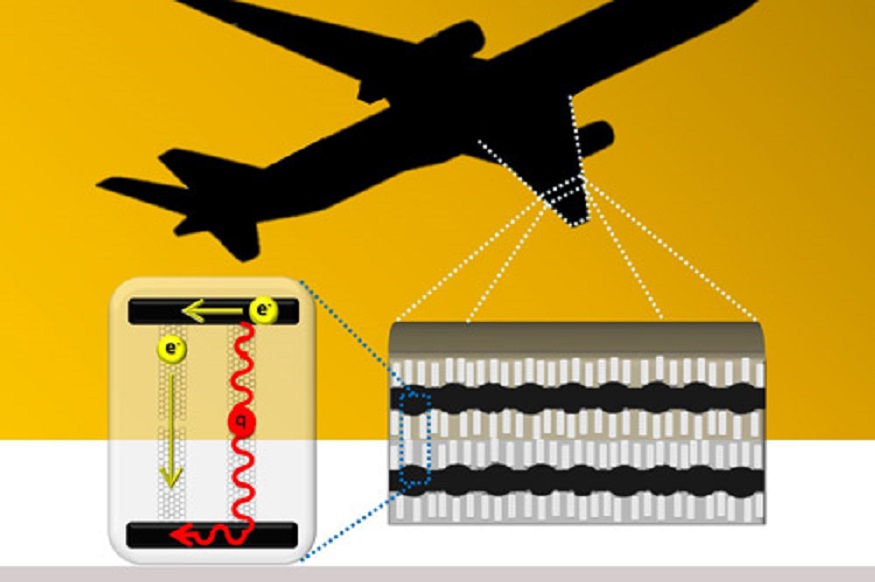
Universities in the UK have developed new technology that could improve the electrical and thermal conductivity of conventional composite materials.
The Universities of Surrey and Bristol and aerospace company Bombardier researched how to grow nanomaterials, specifically carbon nanotubes, on the surface of the carbon fibers to impart these necessary properties.
This could allow a carbon fiber reinforced plastic to be made multifunctional, while still maintaining its structural integrity. Novel functionality including sensors, energy harvesting lighting and communication antennae could be integrated into the structure of the composite to usher in a new era in composite technology.
‘The aerospace industry still relies on metallic structures, in the form of a copper mesh, to provide lightning strike protection and prevent static charge accumulation on the upper surface of carbon fiber composites because of the poor electrical conductivity,’ said Dr Thomas Pozegic, Research Associate in ACCIS and formerly a PhD student at the University of Surrey. ‘This adds weight and makes fabrication with carbon fiber composites difficult. The material that we have developed utilises high-quality carbon nanotubes grown at a high density to allow electrical transport throughout the composite material.’
‘The research has shown that carbon nanotubes can significantly enhance the thermal conductivity of carbon fiber composites,’ added Dr Ian Hamerton, Reader in Polymers and Composite Materials in ACCIS, commented. ‘This will have wide-reaching benefits in the aerospace industry, from enhancing de-icing solutions to minimising the formation of fuel vapours at cruising altitudes.’
This story is reprinted from material from the University of Surrey, with editorial changes made by Materials Today. The views expressed in this article do not necessarily represent those of Elsevier.




